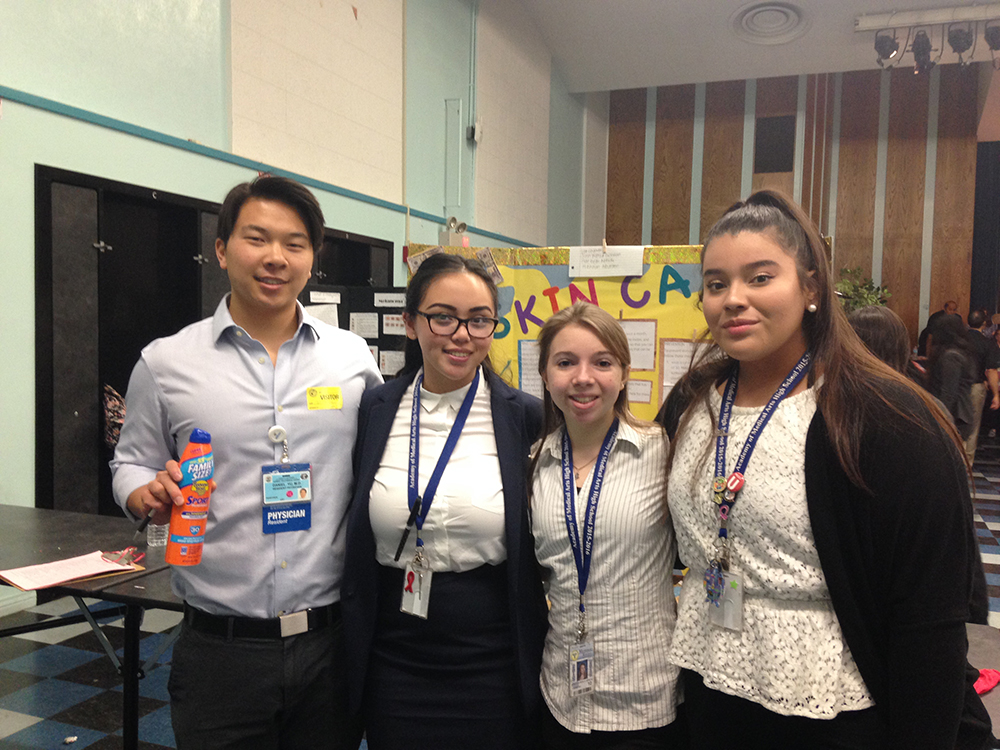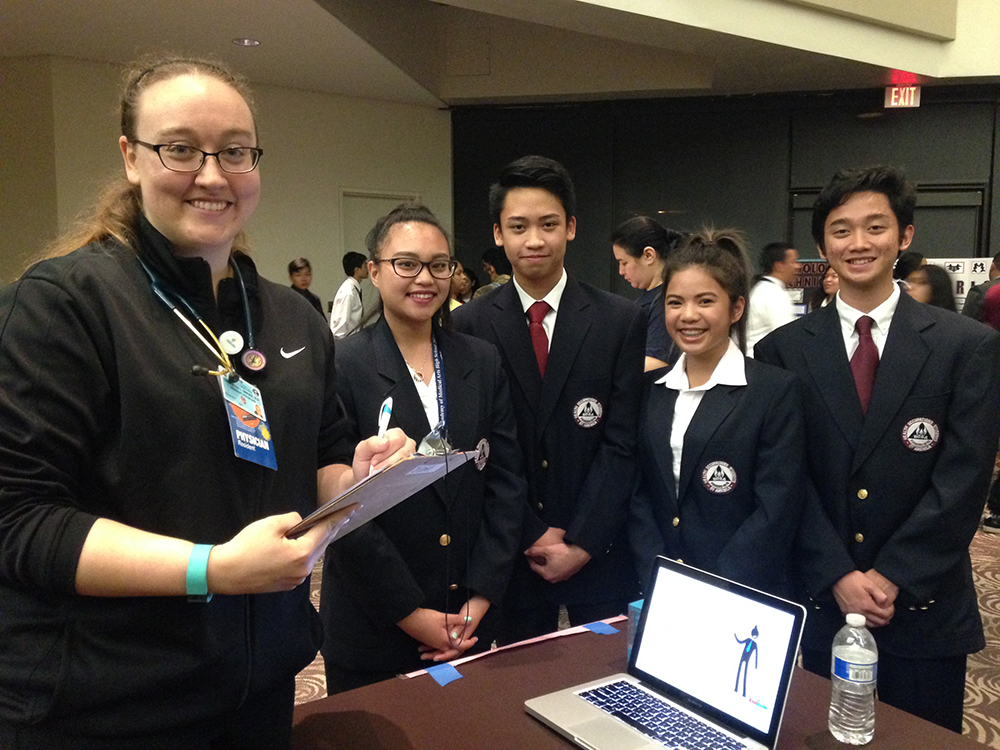“That was a really fun experience,” said Dr. Samantha Snider, about teaching how the urinary tract system works to Meyler Elementary School students, during her advocacy rotation. Dr. Julie Noble, director of the advocacy rotation in the Department of Pediatrics at Harbor-UCLA Medical Center, couldn’t be happier about Snider’s reaction. Noble began leading the rotation because of her commitment to the community’s kids and a desire to foster that passion in her trainees.
As pediatricians, our mission is to promote child health and wellbeing. Keeping kids healthy includes assuring that they are in safe environments, with enough to eat, good education and access to quality health care. But, those aren’t the circumstances for many children, and pediatricians feel compelled to help – some times by finding tangible items, and at other times, by campaigning for child-friendly legislation. Simply put, being a child advocate is just part of the job!
The American Academy of Pediatrics (AAP) sums up advocacy as, “speaking up, speaking out and speaking for…”children, and that’s what we do almost instinctively in the clinical setting. Caring for our economically disadvantaged patients at Harbor, we are well aware that delivering health care includes advocating for their basic needs. This may mean assuring newborns have car seats before discharge, teens have access to confidential mental health care or that hungry kids get food.
Actually, the AAP was established on the principles of advocacy. In the early 1920’s the pediatric section of the American Medical Association (AMA) was supportive of federal legislation to establish dedicated health centers for women and children to help decrease their high rates of mortality. But, the AMA condemned the law as a “radical and socialist” approach to medicine. The pediatricians split from the AMA, and the group evolved into the AAP. Since its inception in 1930, the AAP has continued to fight for the wellbeing of children.
Currently, the Academy is comprised of more than 60,000 members and it’s one of the most highly regarded child advocacy groups in the world. Our voices matter to our elected officials. The AAP convenes an annual legislative training conference in Washington DC. Attendees learn skills for meeting with their congressional representatives and then head to The Capitol to rally for child-related legislation. Over the past 80 years, successful advocacy projects have included campaigning for Medicaid expansion, car safety seats, food safety net programs, vaccine funding, state Child Health Insurance Plan (CHIP) and more recently, policies addressing child poverty and safe,lead-free drinking water in Flint, Michigan.
Acknowledging, in fact, embracing, the role as child advocates allows pediatricians to provide the best care to all kids, not only those directly under our watch. We can crusade at the community, state and federal government levels for child- and family-friendly policies and legislation. We can, and do, give a voice to the politically voiceless.
Recognizing the critical role of being an advocate, pediatric training programs have incorporated educational goals for advocacy. In the journal, Pediatrics Dr. Steven Berman wrote, “Leadership and child advocacy skills can be learned in the same way as clinical decision making skills are acquired, through problem-based learning and experience.” Berman promoted basic concepts for training young physicians as advocates including: understanding the legislative process, working with other prominent organizations (helping to advance recognition as experts in child health policy), and becoming community leaders. Networking is essential for these activities.
At Harbor, these principles help frame the structure for the advocacy rotation. “As professionals in the community, we can make a difference,” said Noble, “I grew up in a small town and became well aware of the impact of the social environment upon health.” She designs the rotation to help the residents nurture their sense of responsibility as community leaders, for example, being champions for local schools. Residents have four weeks on the rotation, usually as interns. In addition, they have abundant opportunities throughout their training to cultivate their advocacy skills, including developing independent projects based on their personal interests.
During the advocacy rotation, residents teach in the mini-med school at Meyler Elementary School, a project especially dear to Noble. She started the program in 2011 for disadvantaged elementary students to cultivate a love for science and health, using lessons about the human body. Dr. Terwa Yong helped develop the curriculum, and Dr. Nilou Tehrani has recently expanded the program to a second neighborhood school. Other resident experiences include attending Legislative Day at the California State Capitol, visiting an Early Head Start and participating in local programs for children with special needs, such as Pediatric Therapy Network.
Last month, Drs. Snider and Daniel Yu were judges at the Health Occupations Students of America (HOSA) Health Care Fair for Carson High School. Much like a traditional science fair, but with emphasis on health, the interns evaluated student projects in health education, global health and public service announcements. Snider described the experience as “great” and “rewarding.” By volunteering with HOSA, the interns had an opportunity to be involved in the community and to serve as mentors for high school students. Not to mention, have fun!
As pediatricians, we see first-hand what children need to grow up with security, safety and health, as well as the consequences when those elements are missing. We are also among the most trusted in our community, affording us a position to speak up for children such that policymakers will listen. Advocacy demonstrates the intrinsic beneficence of our profession and is truly, an opportunity not to be missed.
If you would like more information or to make a donation to the Mini-Medical School Project at Meyler Elementary School, please call 310-222-1225.



